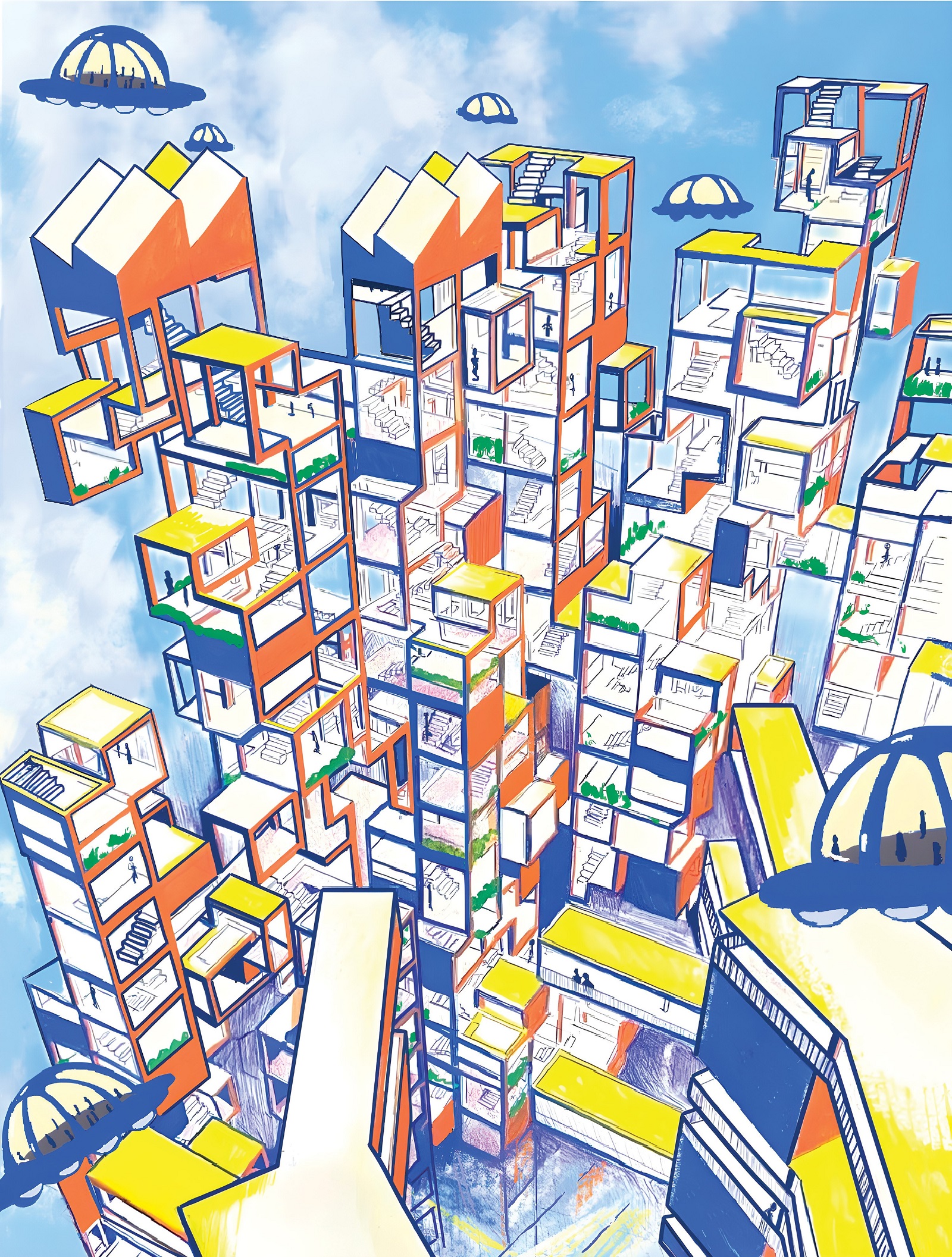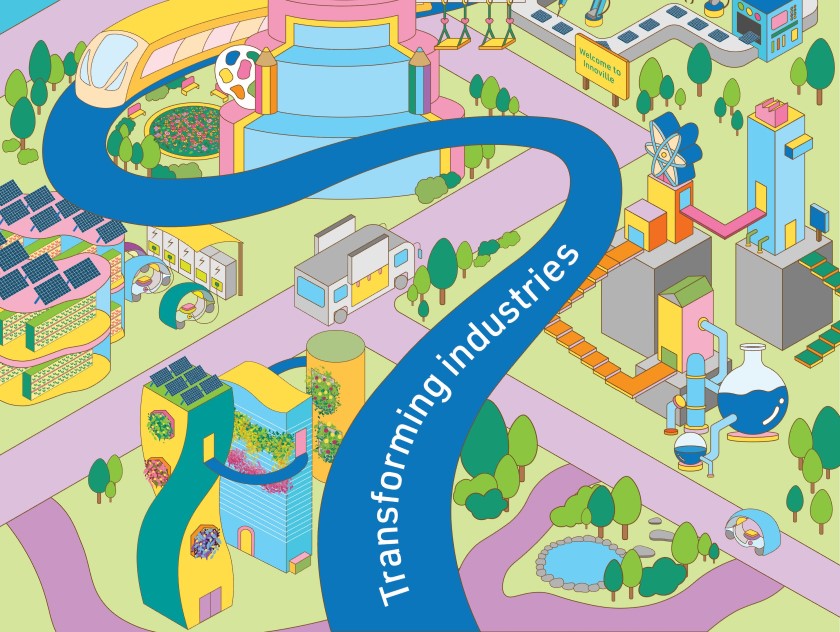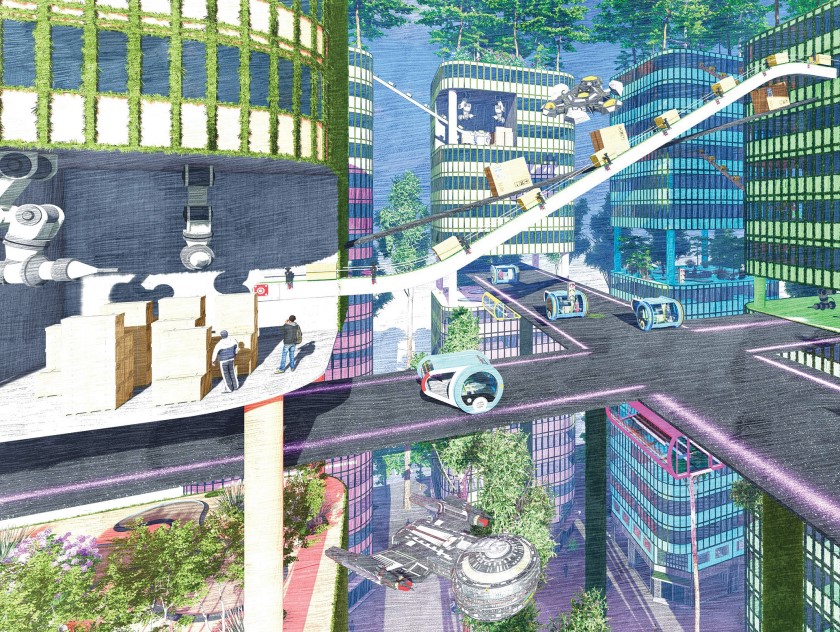Combining the creative flair of students from Nanyang Academy of Fine Arts (NAFA) and the design thinking of architecture students from National University of Singapore (NUS), we present youthful visions of industrial estates of the future.
Industrial estates as an instrument to bridge social gaps
The Fourth Industrial Revolution would, by 2050, have fully addressed the climate issues we face today and net zero buildings would be the norm. However, we foresee the growing trend of increased automation to create potential social tensions.
From automated logistics to advanced manufacturing equipment, novel technologies would no doubt play an important role in Industry 4.0 and even beyond. This leaves us to speculate if factories can function without human workers in the future. While governments cannot simply allow full automation to displace the workforce of entire industries, structural unemployment would likely rise, especially among a demographic of workers who are unable to fully keep up with new technologies.
The increasing world population — already surpassing eight billion people today — could exacerbate the situation, with larger polarised groups and a widening gap between those able to keep up with industrialisation and advanced technology, and those left behind.
In our design of the industrial estate of 2050, we thus propose creating an ecosystem where all, regardless of economic status or technological savvy, can come together to contribute to the betterment of our environment.

Three key tenets anchor our vision. The first is to bridge income inequality brought about in the industrial revolution, and the second is to subtly question our push for automation and possible consequences of such pragmatism — when does it go too far? The third is to address the grievances of those negatively impacted by automation.
To this end, we employ design thinking to establish walkable estates. Walking is more than a green and healthy means of commuting. It is also a powerful equaliser that brings together people from different walks of life. In designing these walkable estates, we propose creating clean, green, built environments that promote maximum productivity of workers. Cities must be fueled by sustainable energy. Singapore’s location on the equator is positioned well to harness solar energy through building integrated photovoltaics panels equipped with sensors, monitors and connection to a well-established smart grid system. The sustainability efforts behind the industrial estates would thus benefit extended communities.
As a team of architecture and fine arts students, we seek to solve these issues through the exploration of built forms and operative design. Drawing upon two disparate sources of inspiration — Anthony Di Mari and Nora Yoo’s Operative Design: A Catalogue of Spatial Verbs and Avatar: The Last Airbender by Michael Dante DiMartino and Bryan Konietzko — we explore a modular design that employs volumetric operations on a hypothetical cube. Apart from facilitating connectivity through a walkable estate design, we also seek to create interesting forms that present homogeneity, yet offer unique solutions through the built environment. We hope to pique the curiosity and perhaps nudge the general public and readers of this publication to question how pushing the boundaries of architecture and art can contribute to the discussion of social equality.
As youths of Singapore and of an increasingly interconnected world, we hope to inspire others to solve these issues for the good of our future.
Equal Dreams is by Ang Zhi Yan (Diploma in Fine Art, NAFA) and William Tay (Department of Architecture, NUS).
The story and artwork first appear in 'Dream Factories', a publication by JTC that presents the transformation journey of our industrial estates. To read the rest of the publication, click here.


